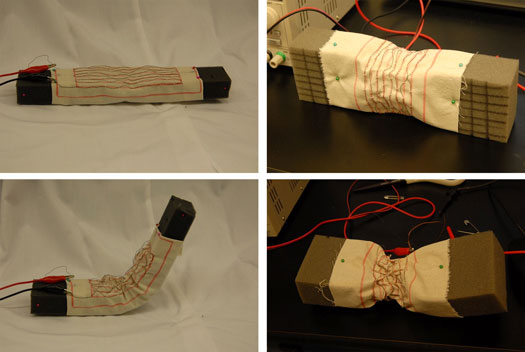 Researchers are developing a robotic fabric that moves and contracts and is embedded with sensors, an approach that could bring 'active clothing' and a new class of soft robots.
Researchers are developing a robotic fabric that moves and contracts and is embedded with sensors, an approach that could bring 'active clothing' and a new class of soft robots.
Sep 25th, 2014
Read more
 Industrialists, academics and students gathered in Edinburgh yesterday to launch a new Centre aimed at developing robots which can act independently and which they believe will revolutionise society in the next twenty years.
Industrialists, academics and students gathered in Edinburgh yesterday to launch a new Centre aimed at developing robots which can act independently and which they believe will revolutionise society in the next twenty years.
Sep 23rd, 2014
Read more
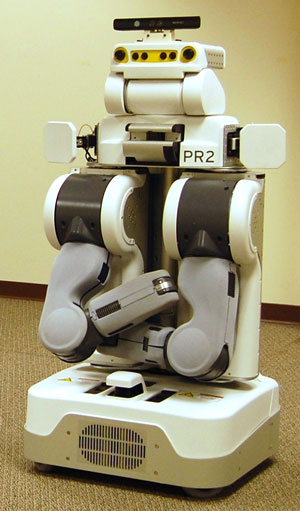 Researchers have created a new search algorithm that improves a robot's ability to find and navigate to tagged objects. The team has implemented their system on a PR2 robot, allowing it to travel through a home and correctly locate different types of tagged household objects, including a medication bottle, TV remote, phone and hair brush.
Researchers have created a new search algorithm that improves a robot's ability to find and navigate to tagged objects. The team has implemented their system on a PR2 robot, allowing it to travel through a home and correctly locate different types of tagged household objects, including a medication bottle, TV remote, phone and hair brush.
Sep 22nd, 2014
Read more
The computer programmes used in the field of artificial intelligence (AI) are highly specialised. They can for example fly airplanes, play chess or assemble cars in controlled industrial environments. However, a research team from Gothenburg, Sweden, has now been able to create an AI programme that can learn how to solve problems in many different areas. The programme is designed to imitate certain aspects of children's cognitive development.
Sep 22nd, 2014
Read more
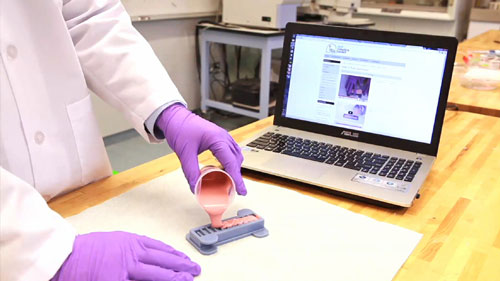 Online resource is designed to foster innovation and learning.
Online resource is designed to foster innovation and learning.
Sep 19th, 2014
Read more
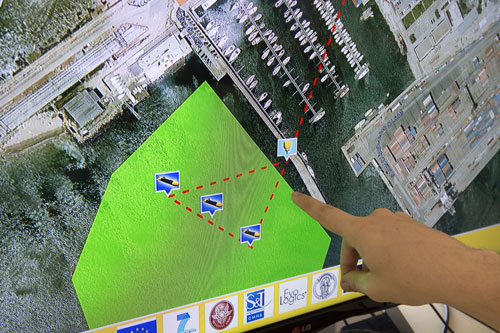 The Sunrise project is at the forefront of a revolution in communications, creating an underwater 'internet of things', that will mobilise robots to work in groups, interacting together and passing back information to us on life underwater.
The Sunrise project is at the forefront of a revolution in communications, creating an underwater 'internet of things', that will mobilise robots to work in groups, interacting together and passing back information to us on life underwater.
Sep 19th, 2014
Read more
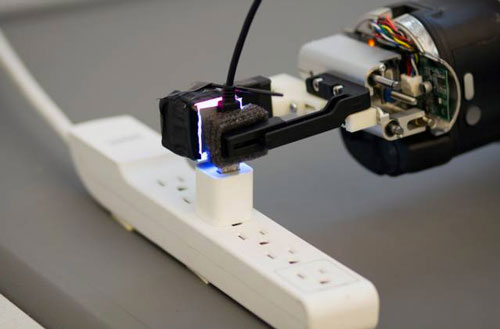 Researchers have equipped a robot with a novel tactile sensor that lets it grasp a USB cable draped freely over a hook and insert it into a USB port.
Researchers have equipped a robot with a novel tactile sensor that lets it grasp a USB cable draped freely over a hook and insert it into a USB port.
Sep 19th, 2014
Read more
 Registration is open for the fourth running of the NASA Centennial Challenge program's Sample Return Robot Challenge, which will take place June 8-13, 2015. The autonomous robot competition, which carries a prize purse of $1.5 million, will be held at Worcester Polytechnic Institute in Worcester, Massachusetts, which has hosted the event since 2012.
Registration is open for the fourth running of the NASA Centennial Challenge program's Sample Return Robot Challenge, which will take place June 8-13, 2015. The autonomous robot competition, which carries a prize purse of $1.5 million, will be held at Worcester Polytechnic Institute in Worcester, Massachusetts, which has hosted the event since 2012.
Sep 18th, 2014
Read more
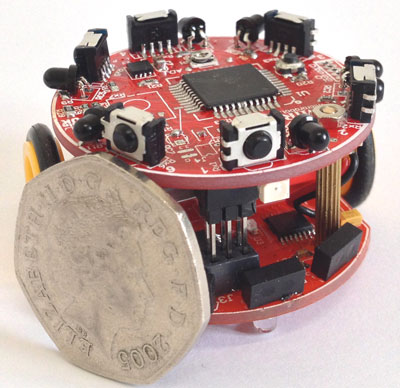 Computer scientists have created a low-cost, autonomous micro-robot which in large numbers can replicate the behavior of swarming honeybees.
Computer scientists have created a low-cost, autonomous micro-robot which in large numbers can replicate the behavior of swarming honeybees.
Sep 18th, 2014
Read more
 There are many situations where it's impossible, complicated or too time-consuming for humans to enter and carry out operations. Think of contaminated areas following a nuclear accident, or the need to erect structures such as antennae on mountain tops. These are examples of where flying robots could be used.
There are many situations where it's impossible, complicated or too time-consuming for humans to enter and carry out operations. Think of contaminated areas following a nuclear accident, or the need to erect structures such as antennae on mountain tops. These are examples of where flying robots could be used.
Sep 17th, 2014
Read more
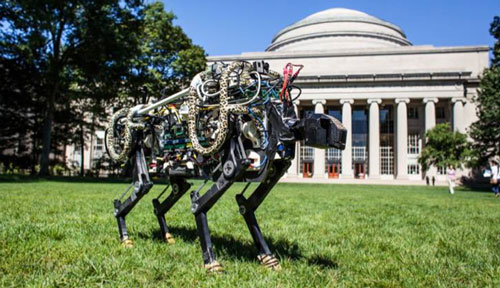 New algorithm enables MIT cheetah robot to run and jump, untethered, across grass.
New algorithm enables MIT cheetah robot to run and jump, untethered, across grass.
Sep 15th, 2014
Read more
Developers from Harvard's School for Engineering and Applied Sciences and the Wyss Institute for Biologically Inspired Engineering have produced the first untethered soft robot - a quadruped that can stand up and walk away from its designers.
Sep 12th, 2014
Read more
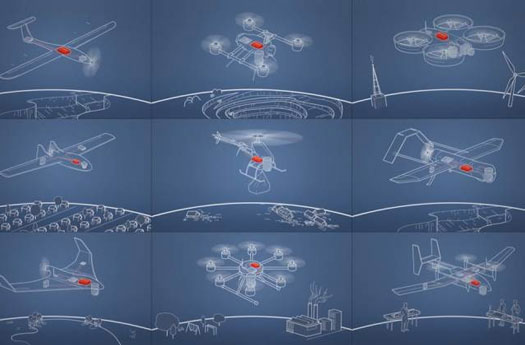 A first-ever standard 'operating system' for drones could soon help manufacturers easily design and customize unmanned aerial vehicles (UAVs) for multiple applications.
A first-ever standard 'operating system' for drones could soon help manufacturers easily design and customize unmanned aerial vehicles (UAVs) for multiple applications.
Sep 12th, 2014
Read more
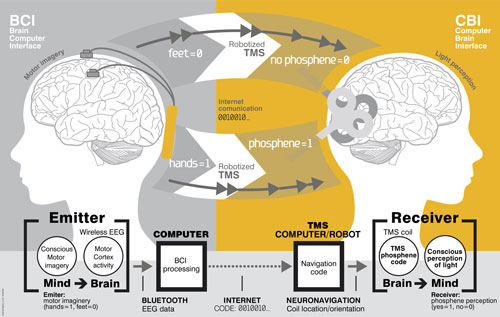 In a first-of-its-kind study, an international team of neuroscientists and robotics engineers have demonstrated the viability of direct brain-to-brain communication in humans.
In a first-of-its-kind study, an international team of neuroscientists and robotics engineers have demonstrated the viability of direct brain-to-brain communication in humans.
Sep 3rd, 2014
Read more
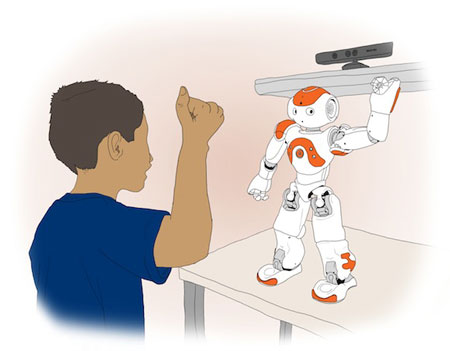 In a pilot study, researchers found that children with autism spectrum disorders showed improved or maintained performance in learning imitative behavior by interacting with humanoid robots that provided graded cueing, an occupational therapy technique that shapes behavior by providing increasingly specific cues to help a person learn new skills.
In a pilot study, researchers found that children with autism spectrum disorders showed improved or maintained performance in learning imitative behavior by interacting with humanoid robots that provided graded cueing, an occupational therapy technique that shapes behavior by providing increasingly specific cues to help a person learn new skills.
Aug 28th, 2014
Read more
 Robo Brain - a large-scale computational system that learns from publicly available Internet resources - is currently downloading and processing about 1 billion images, 120,000 YouTube videos, and 100 million how-to documents and appliance manuals. The information is being translated and stored in a robot-friendly format that robots will be able to draw on when they need it.
Robo Brain - a large-scale computational system that learns from publicly available Internet resources - is currently downloading and processing about 1 billion images, 120,000 YouTube videos, and 100 million how-to documents and appliance manuals. The information is being translated and stored in a robot-friendly format that robots will be able to draw on when they need it.
Aug 25th, 2014
Read more
 Bridges become an infrastructure problem as they get older, as de-icing salt and carbon dioxide gradually destroy the reinforced concrete. A new robot can now check the condition of these structures, even in places that people cannot reach.
Bridges become an infrastructure problem as they get older, as de-icing salt and carbon dioxide gradually destroy the reinforced concrete. A new robot can now check the condition of these structures, even in places that people cannot reach.
Aug 22nd, 2014
Read more
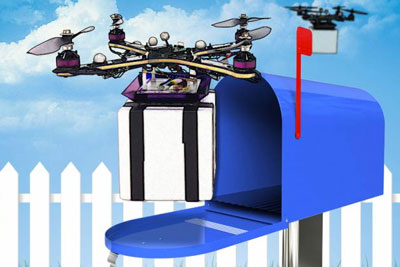 New algorithm lets drones monitor their own health during long package-delivery missions.
New algorithm lets drones monitor their own health during long package-delivery missions.
Aug 21st, 2014
Read more
 Researchers are developing a robotic fabric that moves and contracts and is embedded with sensors, an approach that could bring 'active clothing' and a new class of soft robots.
Researchers are developing a robotic fabric that moves and contracts and is embedded with sensors, an approach that could bring 'active clothing' and a new class of soft robots.
 Subscribe to our Robotics, AI & SmartTech News feed
Subscribe to our Robotics, AI & SmartTech News feed













